- Why Autumn Pruning of Blackcurrants is Important?
- 1. Plant Health:
- 2. Shape and Structure:
- 3. Fruit Quality:
- 4. Ease of Pruning:
- 5. Long-Term Plant Care:
- Increase Fruit Yield
- Maintain Plant Health
- Control Plant Size
- Why is controlling plant size important?
- How to control plant size
- Promote Air Circulation
- Prevent Disease and Pests
- 1. Plant in the Right Location
- 2. Prune Properly
- 3. Clean Garden Tools
- 4. Mulch and Water Properly
- 5. Monitor for Signs of Disease and Pests
- 6. Use Organic Pest Control
- 7. Rotate Crops
- 8. Dispose of Infected Plants Properly
- 9. Encourage Beneficial Insects
- 10. Stay Informed
- Facilitate Harvesting
- Encourage Strong Shoot Growth
- Enhance Overall Plant Appearance
- Question-answer:
- When is the best time to prune blackcurrants?
- Why is autumn pruning important for blackcurrants?
- How do I know which shoots to remove when pruning blackcurrants?
- Can I prune blackcurrants in the spring instead of autumn?
- How much should I shorten the shoots when pruning blackcurrants?
- Video: Gardening in July – 2 Minute Garden Tip to prep for Fall
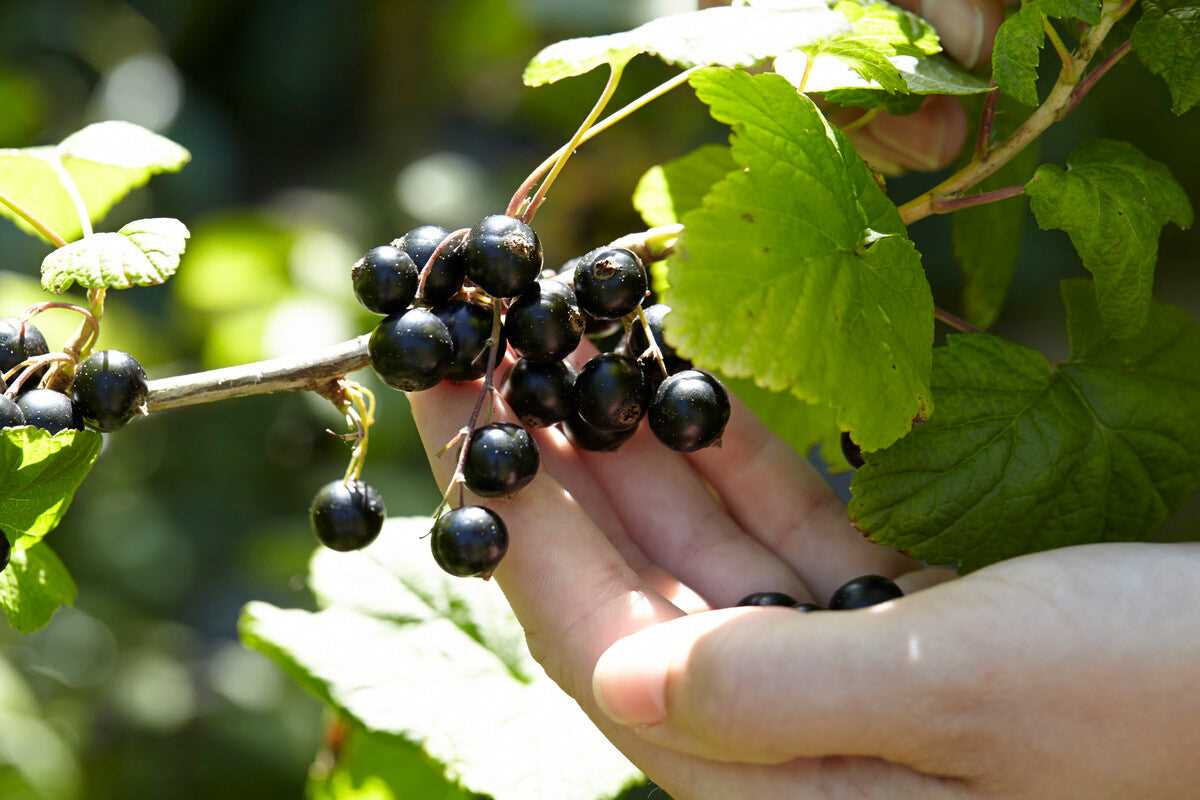
Autumn is the ideal time to prune blackcurrant bushes to ensure healthy growth and a bountiful harvest the following year. Proper pruning helps to remove dead or diseased wood, improve air circulation, and promote the growth of new shoots. In this article, we will focus on the importance of removing and shortening the right shoots for blackcurrant plants.
When it comes to pruning blackcurrants, it’s important to understand the different types of shoots on the bushes. The right shoots are the ones that will produce the best quality fruit the following year. These shoots are usually thinner, more flexible, and located towards the center of the bush. By removing the older, thicker shoots and shortening the right shoots, you can help redirect the plant’s energy and nutrients to the areas that will yield the best results.
Removing the older, thicker shoots not only improves air circulation within the bush, but also reduces the risk of disease and pest infestations. These shoots are more prone to fungal infections and can harbor pests such as aphids. By getting rid of them, you create a healthier environment for the plant to thrive. Additionally, by shortening the right shoots, you can stimulate the growth of more productive side shoots, which will ultimately lead to a higher yield of delicious blackcurrants.
Pruning blackcurrant bushes may seem daunting at first, but with the right knowledge and tools, it can be a straightforward process. By focusing on removing and shortening the right shoots, you can ensure the health and vitality of your blackcurrant plants, allowing them to produce an abundance of sweet, juicy berries for years to come.
Why Autumn Pruning of Blackcurrants is Important?
Autumn pruning of blackcurrants is an important task for maintaining the health and productivity of these fruiting plants. Pruning during this time of year helps to shape the plant, promote better air circulation, and improve fruit quality.
1. Plant Health:
By removing old and diseased wood, autumn pruning helps to prevent the spread of diseases and pests. It also stimulates the growth of new, healthy shoots, ensuring that the plant remains vigorous and productive.
2. Shape and Structure:
Blackcurrant bushes can become dense and overgrown if not properly pruned. Autumn is an ideal time to shape the plant by removing any overcrowded or crossing branches. This allows for better sunlight penetration and air circulation, reducing the risk of fungal diseases and improving overall plant health.
3. Fruit Quality:
Pruning blackcurrants in autumn helps to improve the quality and size of the fruit. By removing some of the old and weak shoots, the plant can redirect its energy into developing larger and sweeter berries. It also makes it easier for the remaining shoots to receive adequate sunlight, leading to optimal fruit ripening.
4. Ease of Pruning:
Autumn pruning of blackcurrants is generally easier than pruning in other seasons. The plant is dormant during this time, making it less susceptible to damage and allowing for better visibility of the branches. Pruning in autumn also gives the plant sufficient time to heal before the next growing season.
5. Long-Term Plant Care:
Regular pruning, including autumn pruning, helps to maintain the long-term health and productivity of blackcurrant bushes. By consistently removing old wood and encouraging the growth of new shoots, the plant can continue to produce abundant and high-quality fruit for many years.
- Overall, autumn pruning of blackcurrants is essential for:
- Promoting plant health and preventing diseases
- Shaping the plant’s structure for better air circulation
- Improving the quality and size of the fruit
- Facilitating easier and safer pruning
- Maintaining the long-term productivity of the plant.
By investing time and effort into autumn pruning, blackcurrant growers can ensure healthier plants and a bountiful harvest in the coming seasons. So don’t forget to prune your blackcurrants this autumn!
Increase Fruit Yield
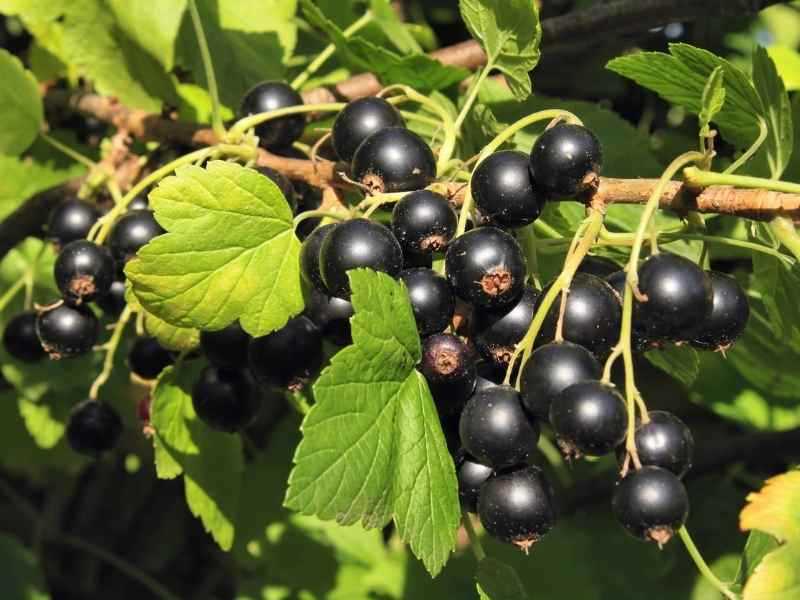

Pruning your blackcurrant bushes in autumn is not only important for maintaining the health and shape of the plant, but it can also significantly increase fruit yield. Here are some reasons why autumn pruning is key to maximizing your blackcurrant harvest:
- Improved Air Circulation: By removing old and overcrowded shoots, you create better airflow within the plant. This helps to prevent the development of diseases and promotes fruiting.
- Enhanced Sunlight Exposure: Pruning allows more sunlight to reach the remaining shoots, optimizing photosynthesis and increasing sugar production. This will result in sweeter and juicier blackcurrants.
- Promotion of New Growth: Cutting back the right shoots stimulates the growth of new, vigorous branches. These new shoots will produce more fruit buds and ultimately lead to a higher yield.
- Thinning of Foliage: Removing some of the foliage through pruning allows better penetration of light and air, reducing the risk of fungal diseases and improving the overall health of the plant.
- Control of Plant Size: Pruning blackcurrants in autumn helps to control the size of the plant, preventing it from becoming too bushy and ensuring that energy is focused on fruit production rather than excessive vegetative growth.
In order to achieve these benefits, it is important to follow proper pruning techniques and timing. Make sure to remove any dead or diseased shoots, as well as any that are crossing or rubbing against each other. Shorten the remaining shoots to an appropriate length, taking into consideration the age and vigor of the plant.
| Type of Shoot | Timing | Length to Shorten |
|---|---|---|
| 1-Year-Old Shoots | Autumn | Shorten by half |
| 2-Year-Old Shoots | Autumn | Remove entirely |
| 3-Year-Old Shoots | Autumn | Remove entirely |
By following these guidelines and maintaining a regular pruning schedule, you can ensure that your blackcurrant bushes are in optimal condition for a bountiful harvest.
Maintain Plant Health
- Regular pruning: Pruning blackcurrant plants in autumn helps maintain plant health. It is important to remove any dead or diseased branches to prevent the spread of pests and diseases. Pruning also encourages new growth and improves air circulation around the plant.
- Remove old wood: As blackcurrant plants age, they can develop woody stems that produce fewer fruits. Removing old wood during the autumn pruning helps rejuvenate the plant and promotes the growth of new, productive shoots.
- Thin out overcrowded branches: Over time, blackcurrant plants can become overcrowded with branches, reducing sunlight penetration and air circulation. Thinning out overcrowded branches during autumn pruning allows for better light exposure and airflow, reducing the risk of fungal diseases.
- Control pests and diseases: Autumn is a good time to inspect blackcurrant plants for signs of pests and diseases. If any pests or diseases are spotted, appropriate measures should be taken to control them. This may include removing affected branches, using organic pest control methods, or applying suitable fungicides.
- Provide adequate nutrients: To maintain plant health, it is essential to provide blackcurrant plants with adequate nutrients. This includes adding organic matter, such as compost or well-rotted manure, to the soil. Additionally, applying a balanced fertilizer specifically formulated for fruit crops can provide the necessary nutrients for healthy growth and fruit production.
- Monitor watering: Blackcurrant plants require regular watering to stay healthy, especially during dry periods. It is important to monitor the soil moisture levels and provide supplemental irrigation if needed. However, it is equally important to avoid overwatering, as this can lead to root rot and other moisture-related issues.
Control Plant Size
Controlling the size of your blackcurrant plants is important for their overall health and productivity. By properly pruning and managing the growth of your plants, you can ensure that they stay compact and produce higher yields of quality fruit.
Why is controlling plant size important?
Blackcurrant plants that are allowed to grow without any control can become large and sprawling. This can lead to several issues:
- Poor airflow: A dense and overcrowded plant can restrict airflow, leading to increased humidity and favorable conditions for the development of diseases, such as powdery mildew.
- Difficulty in harvesting: A large and unruly plant can make it difficult to harvest the fruit. The branches may be tangled, making it hard to reach the berries, or the plant may be so tall that you need a ladder to access the fruit.
- Uneven ripening: A plant that has excessive growth may have shaded areas that do not receive enough sunlight. This can result in uneven ripening of the fruit, with some berries staying green while others turn black.
How to control plant size
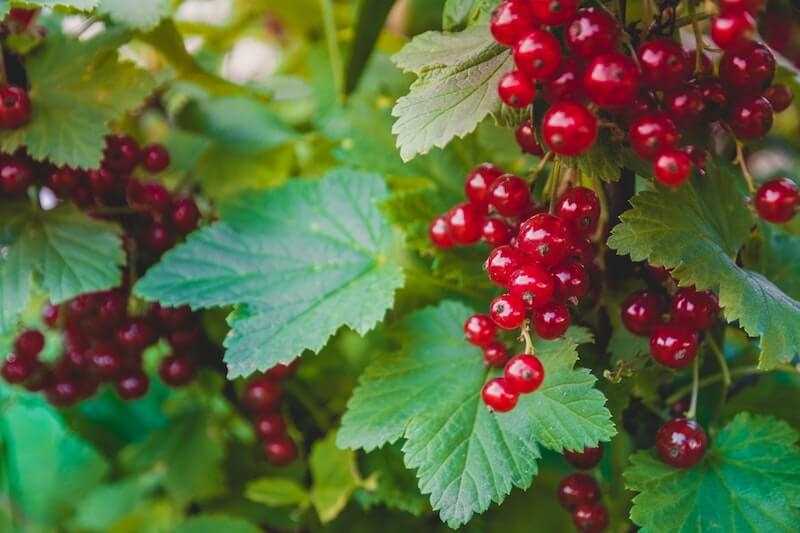

Controlling the size of your blackcurrant plants can be achieved through proper pruning and maintenance. Here are some tips to help keep your plants compact:
- Regular pruning: Prune your blackcurrant plants every year during the dormant season (late autumn or winter). Remove any dead, diseased, or crossing branches, as well as any weak or unproductive shoots. This will help maintain an open and structured plant.
- Shortening shoots: During the autumn pruning, consider shortening the longest shoots to about half of their length. This will encourage the development of more fruiting buds closer to the main stem, resulting in a compact plant.
- Spacing: When planting new blackcurrant bushes, make sure to space them adequately. Follow the recommended spacing guidelines for your specific variety, as this will allow for good airflow and prevent overcrowding.
- Fertilizer management: Avoid over-fertilizing your blackcurrant plants, as excessive nutrients can promote excessive growth. Follow the recommended fertilization guidelines for your specific variety and monitor the plant’s growth to adjust as necessary.
| Benefit of controlling plant size | How to achieve it |
|---|---|
| Promotes better airflow and reduces the risk of diseases | Regular pruning and removal of congested branches |
| Facilitates easy harvesting | Prune to maintain a manageable shape and height |
| Ensures even ripening of the fruit | Proper spacing and pruning to allow sunlight penetration |
By following these guidelines for controlling the size of your blackcurrant plants, you can enjoy a healthier and more productive crop of delicious berries.
Promote Air Circulation
One important aspect of autumn pruning is to promote air circulation within the Blackcurrant bushes. Good air circulation is essential for preventing the growth of fungal diseases, such as powdery mildew and botrytis.
Here are a few steps to promote air circulation:
- Remove any dead or diseased branches: Start by inspecting the Blackcurrant bushes and identify any dead or diseased branches. Cut them off at the base to prevent the spread of diseases.
- Thin out the center of the plant: Blackcurrant bushes tend to grow dense in the center, which restricts airflow. Carefully prune some of the more crowded branches from the center to open up the bush and create space for air to circulate.
- Trim branches that are touching the ground: Branches that trail along the ground can easily collect moisture and become susceptible to diseases. Trim these branches back to maintain proper clearance from the ground.
- Space out the remaining branches: If the Blackcurrant bush still appears crowded after removing dead and diseased branches, selectively prune some of the remaining shoots to create more space between them. This will allow air to flow more freely.
By promoting air circulation through proper pruning, you can help to prevent the development of fungal diseases and improve the overall health of your Blackcurrant bushes.
Prevent Disease and Pests
Pests and diseases can greatly affect the health and productivity of blackcurrant plants. By taking preventive measures, you can minimize the risk of infestation and keep your plants healthy. Here are some tips to prevent disease and pests:
1. Plant in the Right Location
Choose a sunny location with well-draining soil for your blackcurrant plants. Good air circulation will help prevent diseases, so avoid planting them in crowded areas.
2. Prune Properly
Regular pruning helps remove diseased or damaged branches, preventing the spread of diseases. It also improves air circulation and light penetration, reducing the risk of fungal infections.
3. Clean Garden Tools
Make sure to clean your gardening tools, especially pruning shears, to avoid spreading diseases from one plant to another. Disinfect them with a solution of bleach and water before and after each use.
4. Mulch and Water Properly
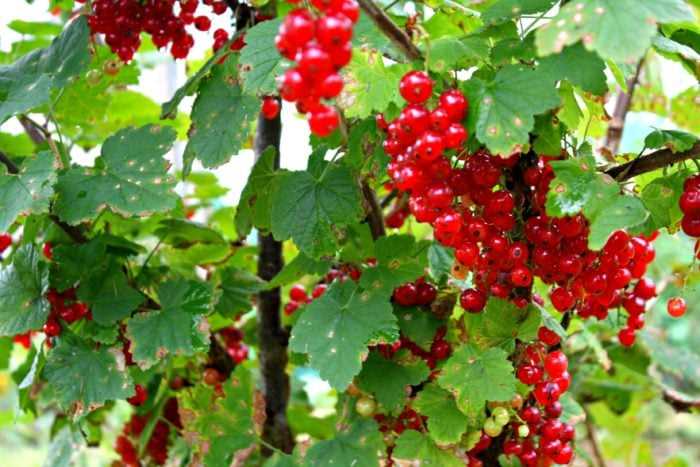

Apply a layer of organic mulch around the base of your blackcurrant plants to help retain moisture and suppress weed growth. Water the plants regularly, but avoid overwatering, as it can lead to root rot and other diseases.
5. Monitor for Signs of Disease and Pests
Regularly inspect your blackcurrant plants for any signs of disease or pest infestation. Look out for yellowing leaves, wilting, spots, or holes in the foliage. Early detection and treatment can prevent the spread of diseases.
6. Use Organic Pest Control
Avoid using harsh chemicals for pest control, as they can harm beneficial insects and the environment. Instead, use organic pest control methods like neem oil or insecticidal soaps to control pests effectively.
7. Rotate Crops
Practice crop rotation by planting blackcurrants in different locations each year. This helps prevent the buildup of pests and diseases in the soil, as different crops attract different pests and diseases.
8. Dispose of Infected Plants Properly
If you have plants infected with diseases, promptly remove and destroy them to prevent the spread of the infection to other plants. Do not compost infected plant material, as it can harbor diseases.
9. Encourage Beneficial Insects
Attract beneficial insects like ladybugs, lacewings, and hoverflies to your garden by providing nectar-rich flowers and using companion planting. These insects prey on common pests, helping to control their population naturally.
10. Stay Informed
Keep yourself updated on the common diseases and pests that affect blackcurrant plants. Read gardening books, join local gardening groups, or consult with experts to learn about the best prevention and treatment methods.
By following these preventive measures, you can ensure the health and productivity of your blackcurrant plants, leading to a bountiful harvest of delicious berries.
Facilitate Harvesting
Pruning blackcurrant bushes in autumn not only helps maintain the plant’s health, but it also facilitates harvesting. By removing and shortening the right shoots, you can make the harvest process smoother and more efficient. Here are a few ways in which pruning can help facilitate harvesting:
- Improved air circulation: Pruning removes excess growth and opens up the bush, allowing air to circulate more freely. This reduces the risk of fungal diseases, such as powdery mildew, and helps the berries dry faster after rain. A well-ventilated bush makes it easier to navigate and harvest the fruit without damaging the remaining branches.
- Enhanced light penetration: Pruning removes overcrowded branches and allows more light to reach the fruits. Blackcurrants require ample sunlight for optimal ripening. When the branches are properly spaced and well-pruned, the berries receive more light, resulting in better color, flavor, and overall quality. Harvesting becomes easier as you can spot and pick ripe berries more quickly.
- Accessible fruit position: Pruning helps create a more manageable bush shape and reduces the height of the branches. This can bring the berries closer to the ground, making it easier to reach and harvest them. Lower branches are more accessible, especially for children or people with limited mobility, enabling them to pick the fruit more comfortably.
- Reduce the risk of thorny branches: Blackcurrant bushes can develop long, thorny branches that make harvesting a painful experience. Pruning helps control the growth and length of these branches, reducing the risk of getting pricked or scratched while picking the fruit. By removing the excess growth, you can create a safer and more pleasant environment for harvesting.
By pruning your blackcurrant bushes in autumn and following the right techniques, you can make harvesting a more enjoyable and efficient task. Remember to always use sharp and clean pruning tools to minimize damage to the plant and maintain its health. Happy harvesting!
Encourage Strong Shoot Growth
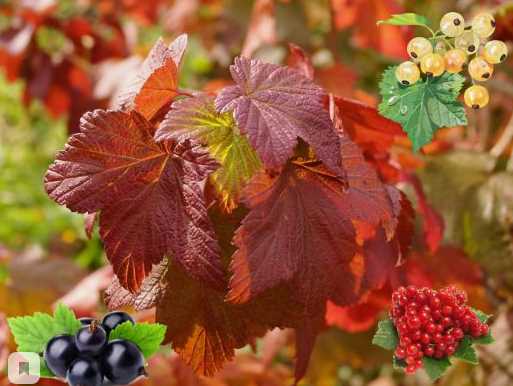

Encouraging strong shoot growth in blackcurrant plants is essential to ensure a healthy and productive harvest. By pruning and training the plants correctly, you can stimulate the growth of vigorous shoots that will bear abundant fruit.
Here are some tips to promote strong shoot growth:
- Choose the right shoots: Select the strongest, healthiest shoots and remove any weak or damaged ones. This will allow the plant to focus its energy on developing robust shoots that will produce high-quality fruit.
- Prune for light and air circulation: Remove any overcrowded or crossing shoots to allow sunlight to reach the inner parts of the plant. Adequate light exposure will stimulate shoot growth and enhance fruit development.
- Train the shoots: Use a system of supports, such as stakes and wires, to train the shoots in an upright position. This will help them grow vertically and maintain an open canopy, which benefits air circulation and sunlight penetration.
- Apply fertilizer: Provide the plants with a balanced fertilizer to supply essential nutrients for shoot growth. Apply the fertilizer according to the manufacturer’s directions and avoid over-fertilization, as it can lead to excessive leafy growth at the expense of fruit production.
- Water adequately: Ensure the plants receive sufficient water, especially during dry periods. Irrigation is crucial for maintaining optimal shoot growth and preventing water stress that can negatively impact fruit yield.
- Monitor for pests and diseases: Regularly inspect the plants for any signs of pests or diseases. Promptly address any issues to prevent them from stunting shoot growth and affecting overall plant health.
By following these guidelines, you can encourage strong shoot growth in your blackcurrant plants and enjoy a bountiful harvest of delicious fruits.
Enhance Overall Plant Appearance
Pruning blackcurrants in autumn not only helps to maintain the health and productivity of the plant, but it also enhances the overall plant appearance. A well-pruned blackcurrant plant looks neat, tidy, and aesthetically pleasing.
By removing the right shoots and shortening others, you can create a more balanced and symmetrical shape for the plant. This helps to prevent the plant from becoming too dense or overcrowded, allowing better air circulation and sunlight penetration.
The removal of diseased or damaged shoots also contributes to the overall improvement in plant appearance. These shoots can be unsightly and may negatively impact the overall look of the plant. By pruning them away, you can create a cleaner and healthier appearance.
Additionally, by removing unwanted shoots and shortening others, you can prevent the plant from becoming too leggy or tall. This helps to maintain a more compact and well-proportioned shape, which adds to the visual appeal of the plant.
Overall, the autumn pruning of blackcurrants not only benefits the plant’s health and productivity but also contributes to a more attractive and aesthetically pleasing garden or landscape. By taking the time to prune your blackcurrant plants properly, you can achieve an overall enhanced appearance that will be admired by all.
Question-answer:
When is the best time to prune blackcurrants?
The best time to prune blackcurrants is in the autumn, after the leaves have fallen.
Why is autumn pruning important for blackcurrants?
Autumn pruning is important for blackcurrants because it helps to maintain the size and shape of the bush, improves air circulation, and promotes better fruiting in the following season.
How do I know which shoots to remove when pruning blackcurrants?
When pruning blackcurrants, you should remove any shoots that are weak, damaged, or growing in the wrong direction. It’s also important to remove any shoots that are crossing over and rubbing against each other.
Can I prune blackcurrants in the spring instead of autumn?
While it is possible to prune blackcurrants in the spring, autumn pruning is generally recommended as it allows the plant to focus its energy on root development during the winter months.
How much should I shorten the shoots when pruning blackcurrants?
When pruning blackcurrants, you should aim to shorten the shoots by about a third to a half of their length. This will help to encourage new growth and ensure a healthy and productive plant.







